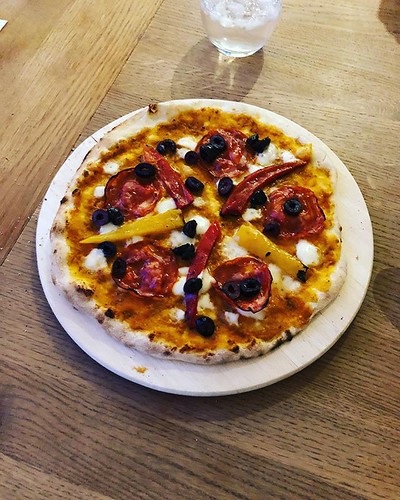Uspects were captured. We conduct a thematic content coding, based upon
Uspects had been captured. We conduct a thematic content material coding, primarily based upon successful message content and style elements described above, to determine variables that may predict message amplification via public retransmission. Variables contain content material themes, message style, and network features of posted accounts. Coding methods for primary thematic content material analysis and message style qualities replicate these previously conducted by Sutton et al. [62], for crosshazard comparative purposes. Within this case, two researchers manually coded the entire set of official tweets for the observation period, using a deductive content coding method that drew from codes that were developed during prior study activities on terse messaging by means of Twitter throughout a wildfire occasion [62]. Each coders had been blinded for the retweet count information prior to and through the coding method, and content material codes were hence determined independently on the outcome of interest. To start, the coders independently scanned all tweets to figure out that the original coding categories match together with the Boston occasion information. Additionally they met to talk about any emerging themes. Subsequent, the set of tweets was splitrecoded by each coders, with a single half being blind recoded by each researcher and after that exchanged and checked for intercoder agreement. Coders agreed on theme codes in about 98 of cases. Disagreements were resolved by consensus, following of problematic instances by the coders. Coders in the end identified 0 major themes (plus two further categories; one particular for tweets that were not ontopic, i.e. pertaining to the Boston occasion, and 1 for tweets that did not match into any category). Main themes range from evacuation guidance and sheltering in spot to hazard facts (including listings of telephone numbers and resources). A full list of content material themes is often found in Table . Following approaches made use of in earlier research in this location [62], two researchers also manually coded every tweet for elements of message style. Style aspects, which emphasize how content material is relayed or displayed to impact message specificity or clarity [0] involve the following: how each and every sentence inside the tweet functions inside the English language as Tunicamycin site either declarative, crucial, interrogative, or exclamatory; and (2) regardless of whether a tweet involves a word or phrase in ALL CAPS we distinguish involving capitalizations made use of as either a category signifier or to emphasize a portion of the tweet. Furthermore, we employed automated procedures to code for conversational microstructure elements inside the tweet (i.e. traditional aspects of Twitterbased syntax that lend to message retransmission or engagement) [62]. These consist of whether the tweet was directed at or responding to a different Twitter user (starts with @name), contained a mention of one more user, contained a hashtag keyword, and referenced  additional data obtainable on the web within the kind of links to URLs (typically shortened by utilizing bit.ly or one more brief URL service). For both thematic content material and style characteristics, messages were coded in a nonmutually exclusive manner; in other words, a single tweet could include numerous forms of content material too as many sentence options or other stylistic elements.Measuring and Modeling Message RetransmissionA central observation of our and prior perform (as cited above) is that not all messages are equally most likely to become passed on by others; we therefore seek to recognize PubMed ID:https://www.ncbi.nlm.nih.gov/pubmed/24134149 the elements that boost or inhibit message transmission, by mea.
additional data obtainable on the web within the kind of links to URLs (typically shortened by utilizing bit.ly or one more brief URL service). For both thematic content material and style characteristics, messages were coded in a nonmutually exclusive manner; in other words, a single tweet could include numerous forms of content material too as many sentence options or other stylistic elements.Measuring and Modeling Message RetransmissionA central observation of our and prior perform (as cited above) is that not all messages are equally most likely to become passed on by others; we therefore seek to recognize PubMed ID:https://www.ncbi.nlm.nih.gov/pubmed/24134149 the elements that boost or inhibit message transmission, by mea.
